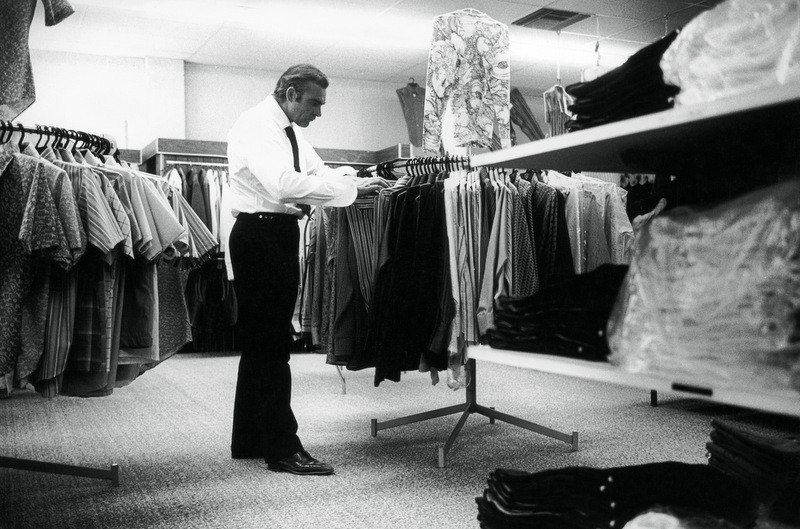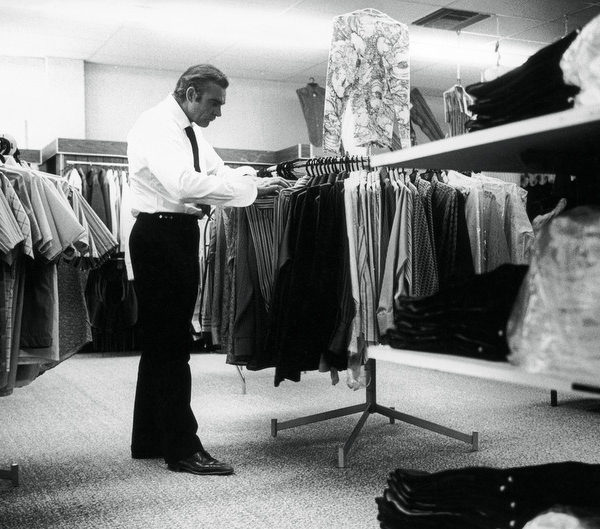
Every once in a while, you’ll see a new member on StyleForum say that he’s just become interested in classic, tailored clothing, and would like to know what he should buy. This is always a difficult question to answer, as so much depends on the region and profession you’re in. Someone in the tech sector in the Bay Area, for example, will have very different needs than someone in finance in New York City.
However, to the extent that some advice can be given, the basics of a classic wardrobe are remarkably straightforward.
Pants and Shirts
First, buy a bunch of wool trousers in various shades of gray, from light to medium, and maybe throw in one or two pairs in brown for good measure (again, light to medium shades work best). Flannel wool and some kind of wool twill are great starters. The first will feel better, but the second will be harder wearing. You can supplement these with a couple of seasonal trousers, such as tan linens for summer and cavalry twills for fall, as well some year-round casual basics such as khaki chinos and dark blue jeans (most of these being your weekend pants, although chinos work pretty well as office wear these days).
For your shirts, focus on light blues. Solids are a good foundation, although I recommend leaning towards slightly more interesting weaves than poplin. After that, you can get a range of stripes (from thin to bold, but try to stick with in blue), as well as one or two checks (tattersalls, gingham, or graph check). Throw in a few solid white shirts as well. These will work better with more formal ensembles and for nighttime activities. Since you need something to wear with your jeans, I recommend some plain ol’ t-shirts in solid white or heathered grey.
Coats and TIes
Turning to sport coats, aim for simple, basic designs in navy and brown. These should have some kind of texture to them, as anything too smooth or fine will look too much like a suit jacket. A navy or brown sport coat – in a solid or conservative pattern – can be worn multiple times a week without anyone remembering when you wore it last. Take care too that your jackets don’t have any extreme details. Overly high gorges and short lengths are very in fashion right now, but these might make you look dated in a few years’ time.
If you need ties, buy repp stripes if you mostly wear sport coats, and ones with small repeating floral or figured patterns if you wear suits. I talked about both here. If you wear patterned shirts often, consider relying more on solid ties with a slightly textured weave to them. These will give your combination some interest without forcing you to think too much about whether or not what you’re wearing is clashing. Avoid anything too skinny or wide. Three and a quarter inches will suit almost anyone’s build, and should generally be in the range of your lapel width (no skinny ties with wide lapels, or vice versa). Stick to dark colors such as navy, dark green, dark brown, and burgundy for the most versatility.
Knitwear and Shoes
For sweaters, get a couple of plain v-necks if you plan to wear them underneath sport coats. Colors such as solid navy, brown, grey, and burgundy work well. If you plan to wear your sweaters more casually (that is, without a sport coat), I recommend picking something a bit more textured or patterned to make things interesting. Arans, Fair Isles, cable knits, and buttoned mock necks are just a few of the ones I like. You can even layer them on weekends with outerwear like this.
Finally, for shoes, I recommend these seven.
Everything Else
Of course, these are just guidelines, and you should choose things that are right for your lifestyle and sense of taste. If you want a pair of double monks, by all means get a pair. But don’t go out and splurge on eight of them, especially if you’re just starting out. Build a foundation of classic, versatile basics, and let your taste and sense of dress mature before you buy wilder things. If you have a closet full of pin dot cutaway collar shirts, blackwatch tartan pants, and double monks in every animal skin you could find, you’re headed for a purge in a maybe a year’s time.
While you’re acquiring all these things, learn how clothes should fit. These guides should help. Also, find a good alterations tailor while you’re at it. Whether you shop at Land’s End or Loro Piana, a good alterations tailor will make your clothes look twice as good and three times as expensive.
But all this is the easy part. The hard part is in knowing how to wear your clothes well. That comes with a lot of practice and finding things that best suit your needs and personality.








